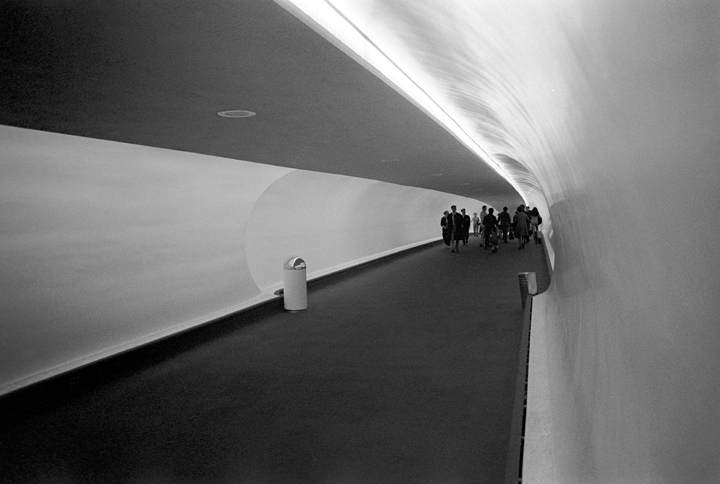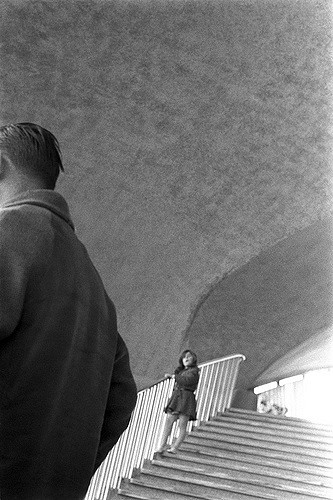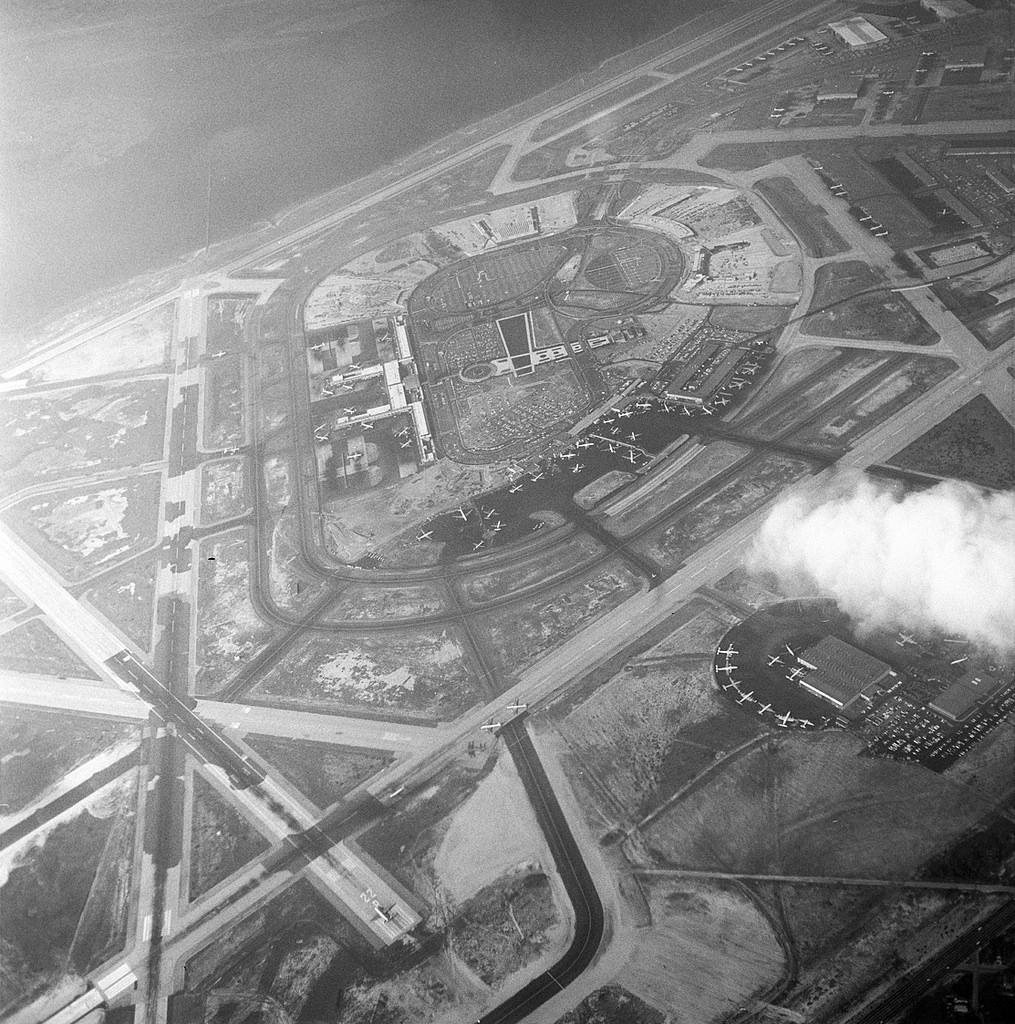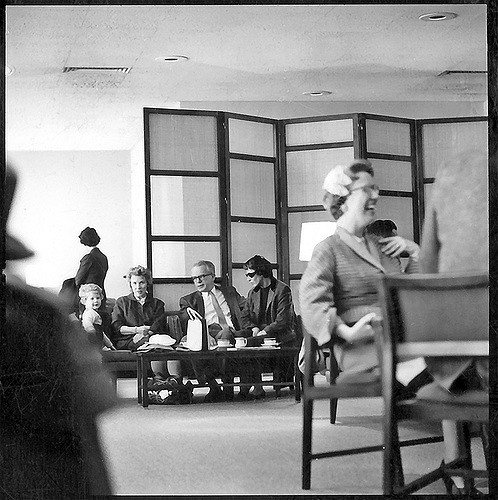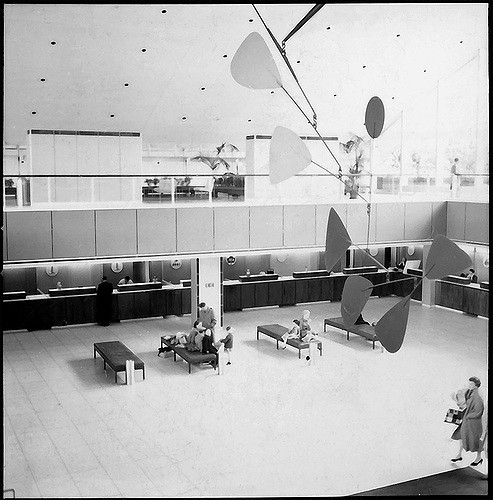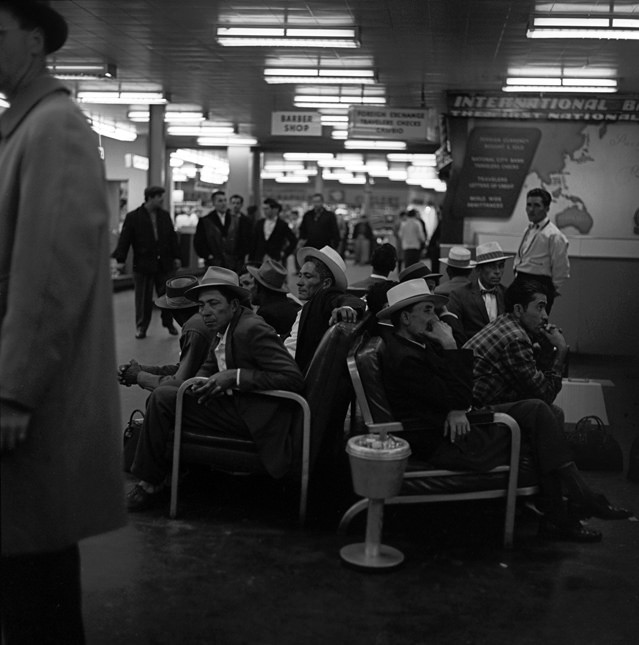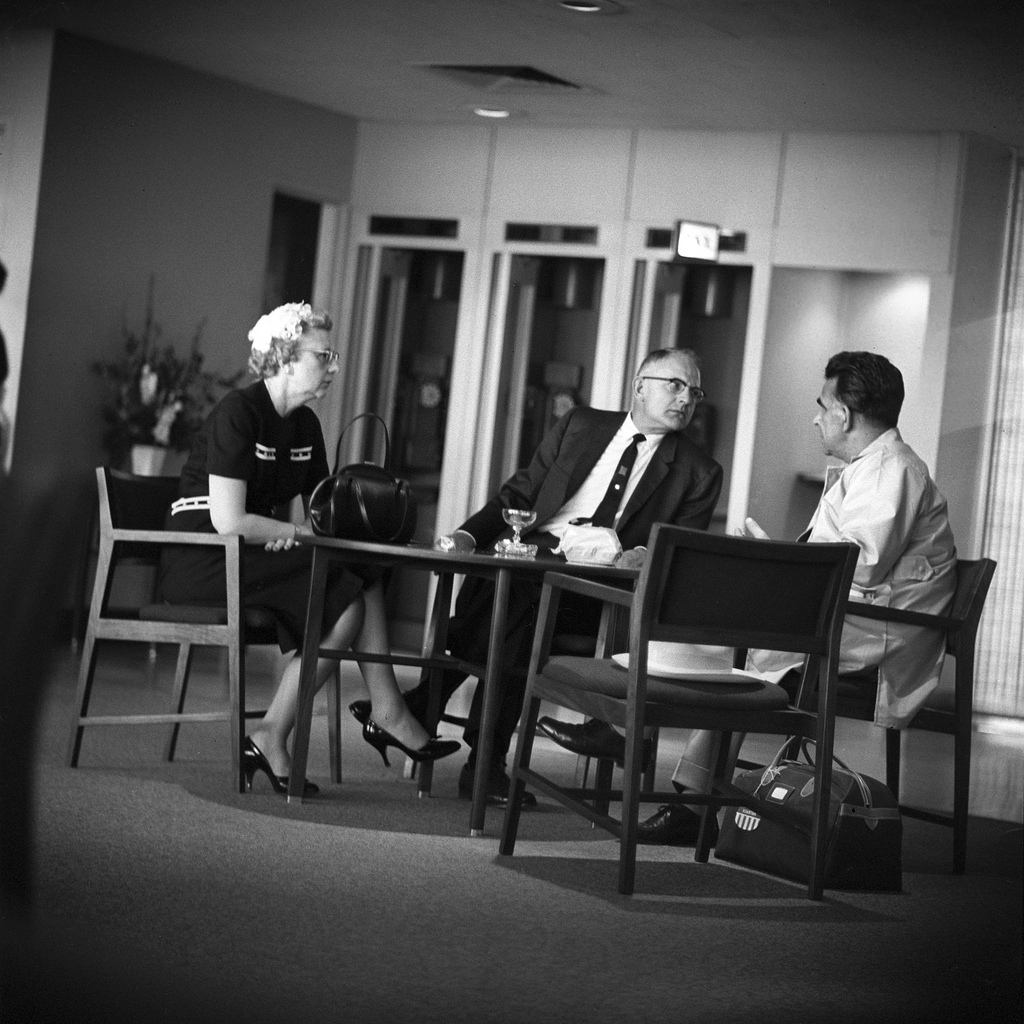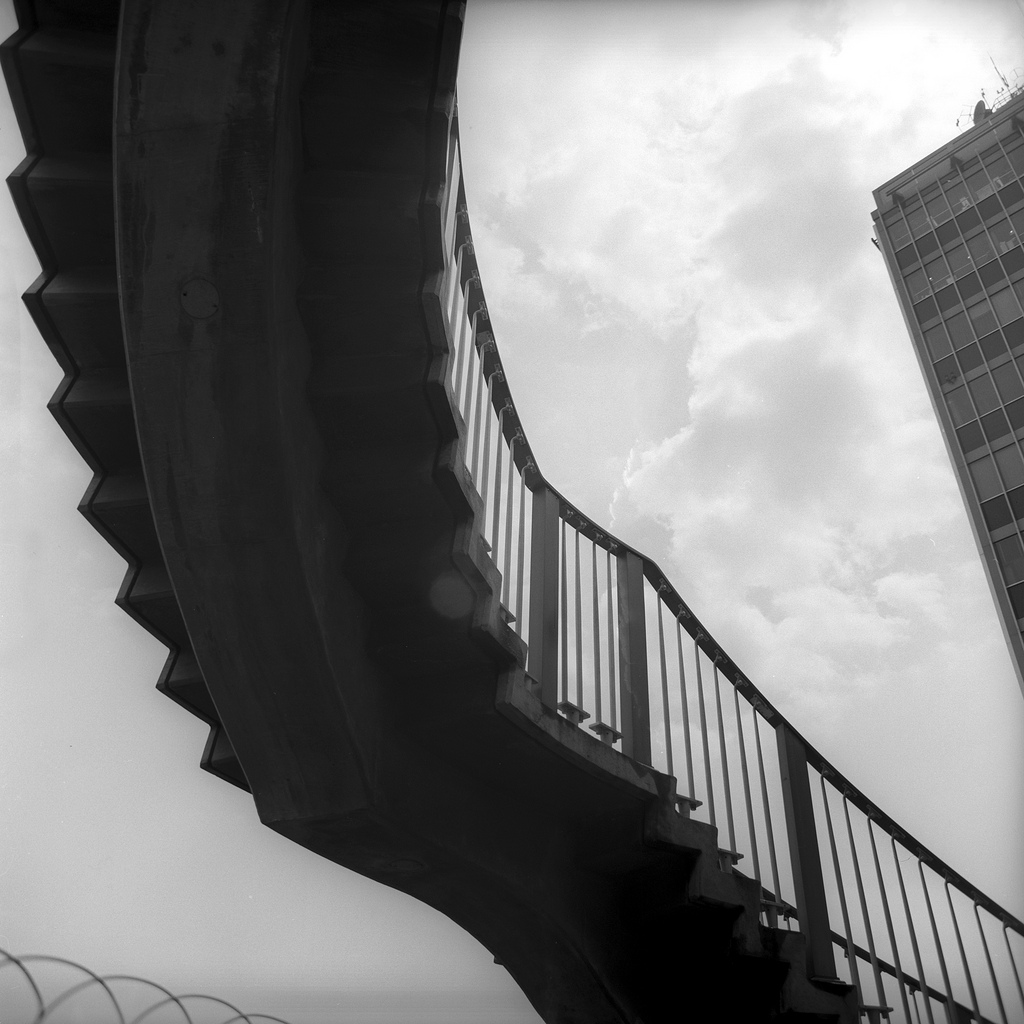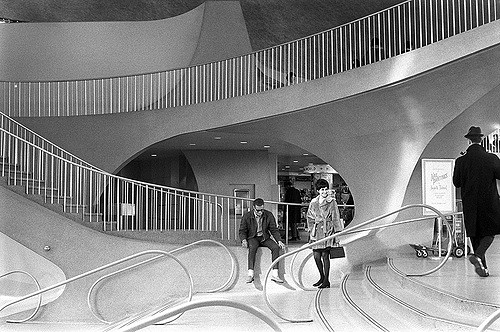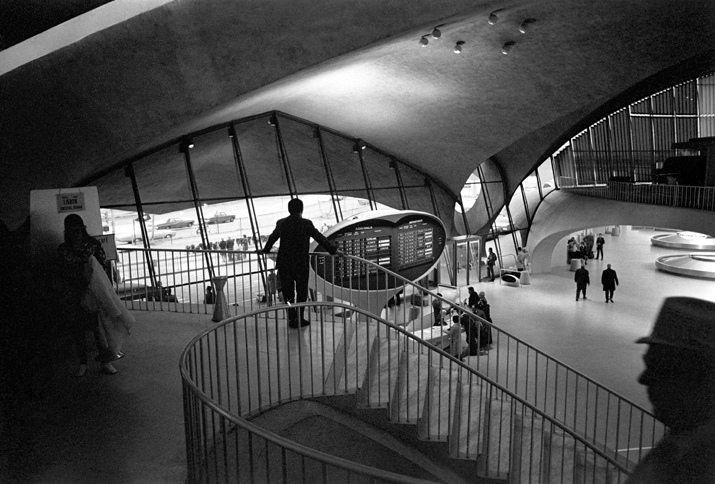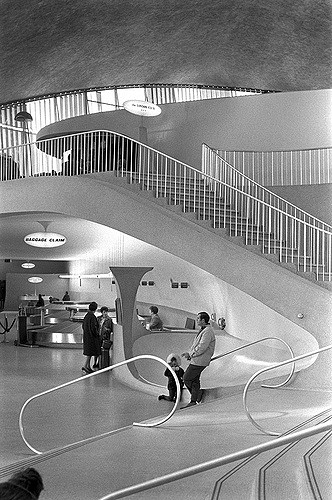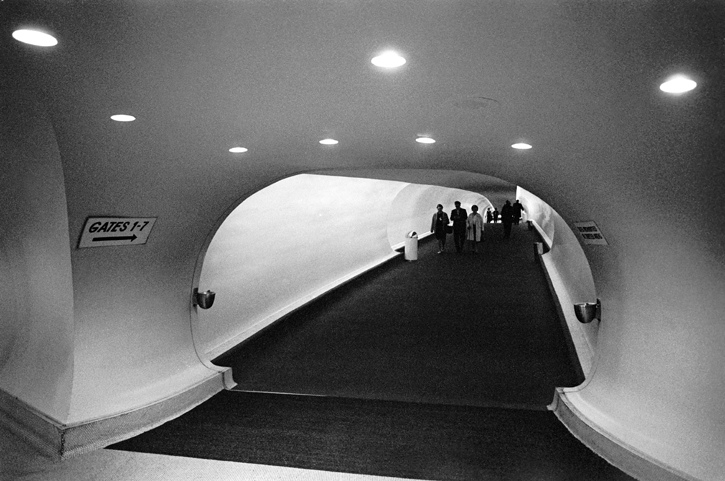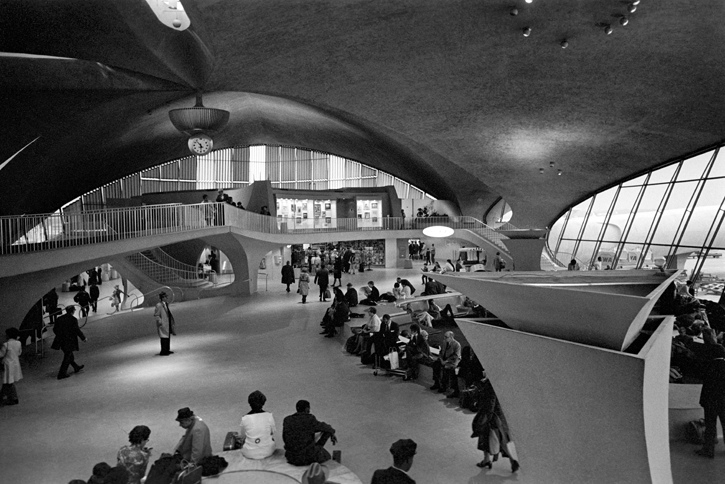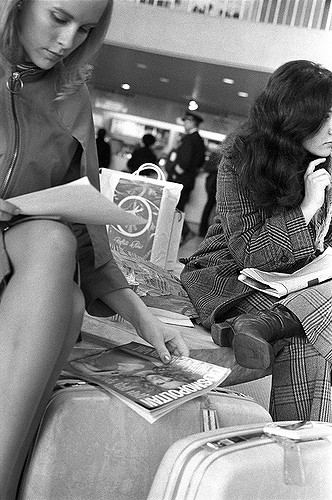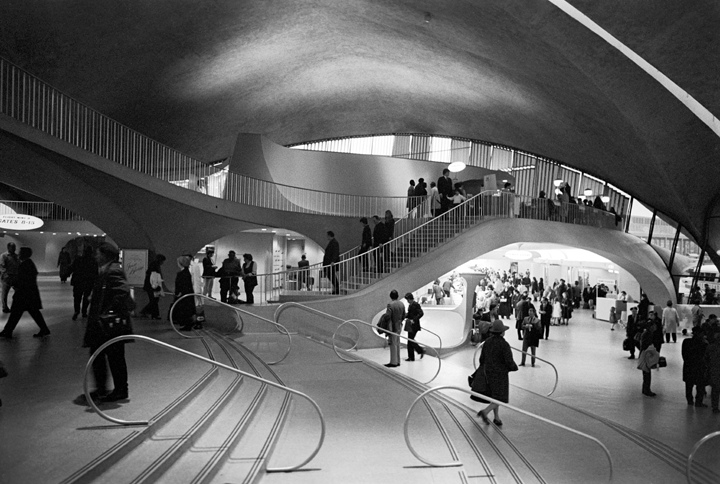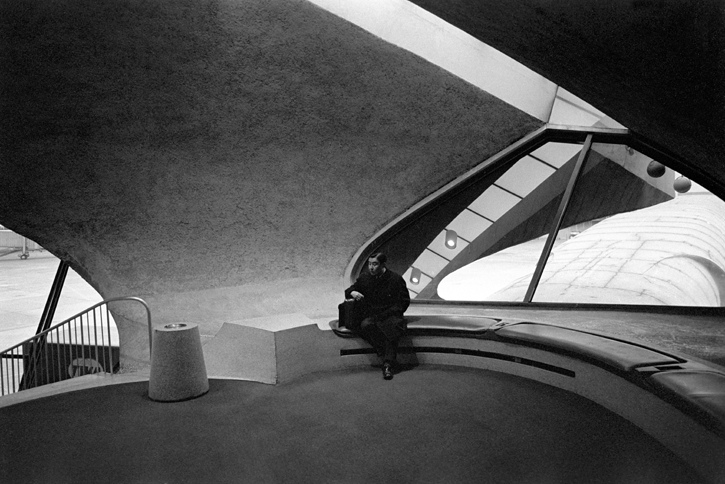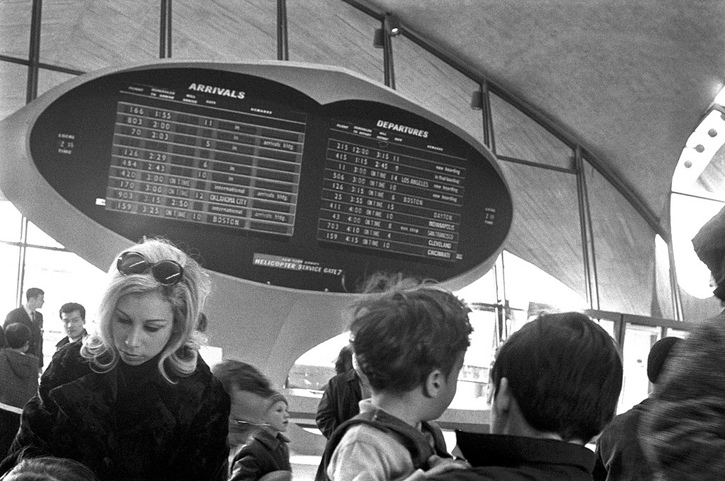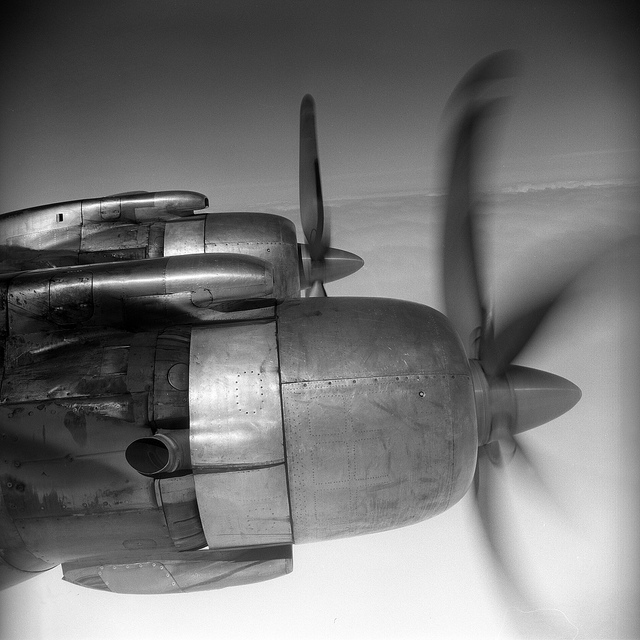The airport is where you arrive and depart. It’s like a hospital, but without the certainty and the escape of anaesthesia. Something might go wrong and the routine operation ends with a slip of the scalpel or a martyr’s bomb The airport is where you wait, get separated from your bags and of your own free queue to have your identity ascertained and reasons challenged by armed and dangerous officialdom.
But look at that design, the gorgeous contours of ethereal curves at the Trans World Flight Center airport terminal at New York City’s John F. Kennedy International Airport (formerly Idlewild Airport). You want to touch the walls as your moved from here to there with maximum efficiency and minimal fuss. Many modern airports are designed to replicate shopping centres, which in turn are designed to replicate airports, only without any sense of purpose and thrill of seeing people for the first time and others maybe for the last. The least an airport can do it look like a portal to a new beginning. The gorgeous, gull-wing shaped TWA Flight Center was part of the escape.
Opened in 1962, the TWA terminal at JFK was designed by Eero Saarinen (August 20, 1910 – September 1, 1961), a Finnish-born devotee to form and function.
“He wanted to provide a building in which the human being felt uplifted, important and full of anticipation,” the architect’s wife, Aline B. Saarinen, told George Scullin in his 1968 book, International Airport: The Story of Kennedy Airport and U.S. Commercial Aviation. The place was its own destination.
Saarinen first received critical recognition for the Tulip Chair he designed together with Charles Eames for the ‘Organic Design in Home Furnishings’ competition in 1940, for which they received first prize. “The undercarriage of chairs and tables in a typical interior makes an ugly, confusing, unrestful world,” said Saarinen. “I wanted to clear up the slum of legs. I wanted to make the chair all one thing again.” Between then and the TWA job, Saarinen designed the Gateway Arch National Parkin St. Louis, which incorporated his love of catenary curves and flowing simplicity. The completed airport terminal was dedicated on May 28, 1962. Saarinen never saw his masterpiece completed and peopled. But Nick DeWoolf did.
Born in Philadelphia on July 12, 1928, Nick DeWolf (1928 – 1976) graduated from the Massachusetts Institute of Technology at 19. A biography of the man whose pictures we are lucky enough to feature here, adds:
He started in the industry as an engineer for General Electric in 1948 when the world was trying to master the solid state diode. The challenge was not so much in the making of them, but in the testing of them. DeWolf mastered the technology and quickly became an expert. Because GE could test them better than anyone, they became a leader and the company also marketed a tester designed by DeWolf. In 1952, he wrote the following cannons of design:
The Design of Factory Production Test Equipment
1) It must be reliable.
2) It must be safe to use, and almost impossible of causing injury.
3) It must be reliable and use good components and circuits.
4) It should be simple, to ease maintenance.
5) It must be easily calibrated with simple gear.
6) It must operate in a wide range of supply voltages.
7) It must operate in a wide range of temperatures.
8) It must be reproducible. If several sets are built, they MUST read the same thing, even if it involves a loss in overall
absolute accuracy.
9) It must be simple to maintain and accessible.
10) The operating portion of the gear at the operator’s station must be small to prevent overcrowding.
11) It must test only the desired characteristics and not be responsive to other parameters, or varying quality may result as
product changes are made.
12) It must be accurate.
13) It must be stable.
14) It must be capable of a complete test in a short period of time, or testing expense will increase.
15) It must require a minimum of thought on the part of the operator.
16) It must not fatigue the operator, or mistakes will occur.
17) It should be reasonably neat in appearance. This instills confidence in the equipment.
18) It should be flexible enough to allow for specification changes that inevitably occur.
19) It must favor the rejection of bad units over their acceptance, in respect to predictable drifts and failure. This applies
particularly to automatic test equipment fail safe!
20) It should be reasonable quiet and cool and not damage tested units.
21) Remember the operator, who is 2/3 of the equipment.
22) It must give repeatable results.
In 2005, engineer Nick DeWolf spoke with Craig Addison. Knowing a little of the man behind the images is always useful – if nothing more, it suggests to us why something caught his eye, why he wanted to look at again and, thanks to the archivist who preserve his collection, show it to us. As with Saarinen, DeWolf was an advocate of an elegant simplicity of form and function:
In 1960, he founded Teradyne, a Boston-based company specializing in test equipment for semiconductors. At Teradyne he served as CEO for just over 10 years and during that time designed more than 300 testers, including the J259 computer operated test system for ICs. DeWolf retired as CEO in 1971 and moved to Aspen, Colorado, where he has been active in community projects. In 1979, he was a recipient of the SEMI Award for outstanding contributions to the semiconductor test industry.
…
“I tested machine guns [at GE]. That was kind of exciting,” he recalled. “I managed to almost destroy a two million dollar transformer. That was kind of exciting. I did my rounds as an engineer. In those days engineers were very important. And if you were a moderately good engineer and stuck to your last you would wind up top management. Very different today where engineers have been often times treated rather badly I think.”
His words on travel are apposite:
“I went to Asia for almost a year. I don’t know exactly but it seemed like a long, long time. And I absolutely loved Asia . And in that fashion I could die. Nobody knew where the hell I was or what I was up to. They were able to forget me. And I came back from the trip, which I greatly enjoyed, because I really like Asia a lot and I enjoy adventuring all by myself. I was just me. Period. No mission. No credentials. Just a passport. By the time I got back the wars had decided themselves and everybody knew that Nick was gone. And about a year later I came to Aspen [ Colorado ]. And in Aspen I never told anybody what I had done. This kind of thing didn’t happen. They had no idea. They thought I was some strange, long-haired inventor. Period. So I had the fun of living in Aspen as a mystery fellow. All the others…everybody knew every drop of their business history and most of them were in real estate or Hollywood . So nobody knew anything about Teradyne. What the heck is that? It suited me fine. It was great to start a new life.”
We hope to feature more of Nick DeWolf’s incredible archive soon.
All images by Nick DeWolf. See more of his work in Flickr.
Would you like to support Flashbak?
Please consider making a donation to our site. We don't want to rely on ads to bring you the best of visual culture. You can also support us by signing up to our Mailing List. And you can also follow us on Facebook, Instagram and Twitter. For great art and culture delivered to your door, visit our shop.


